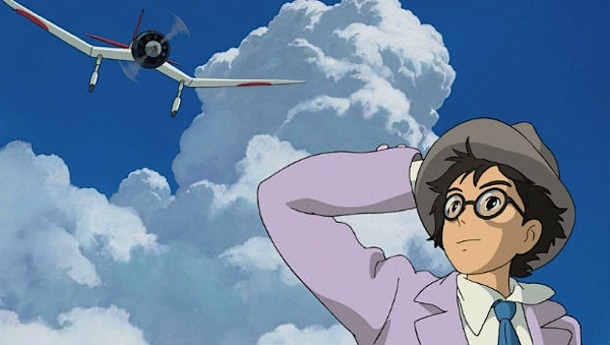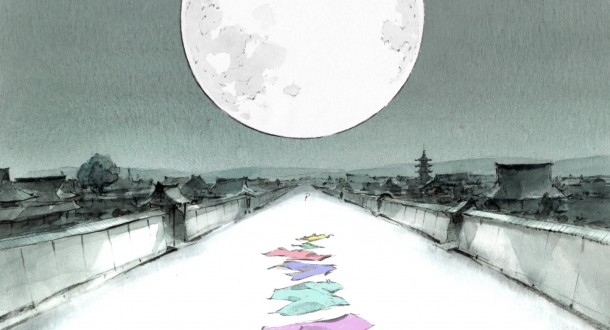





This year’s 77th edition of Cannes Festival will award an Honorary Palme d’or for the first time to a group rather than an individual: Studio Ghibli.
Alongside the Hollywood greats, the Japanese studio embodied by two superb storytellers, Hayao Miyazaki and Isao Takahata, and a host of cult characters, has unleashed a fresh wind on animated film over the past four decades the Japanese animations have brought a breath of fresh air to the genre appealing to both kids and adults with vibrant universes and sensitive, engaging stories that brings together traditional and contemporary.

The Wind Rises (2013) @StudioGhibli
The Festival de Cannes was an early explorer of the animated film adventure. In the early years, Walt Disney productions presented short films (1946) and the feature Dumbo (1947). In 1953, Walt Disney himself took Peter Pan to the Croisette, where René Laloux won a special Jury Prize in 1973 for his first feature, Fantastic Planet. After a long absence, animation returned to Cannes in force with Shrek (2001) and Shrek 2 (2004), Ghost in the Shell 2: Innocence (2004), Persepolis (2007), Waltz with Bashir (2008), which all received awards in the Competition, or even Up, which opened the Festival in 2009. Many other films, such as Inside Out, Kirikou and the Wild Beasts, and more recently, Elemental, and Robot Dreams have also left their mark. Moreover, Un Certain Regard welcomed The Red Turtle (2016), Studios Ghibli’s first collaboration with a European production company.
It all began 40 years ago. The success of Hayao Miyazaki’s Nausicaä of the Valley of the Wind in 1984 enabled him to establish Studio Ghibli with Isao Takahata in 1985. Today, the films are watched by people all over the world, and draw many visitors to the Ghibli Museum, Mitaka and Ghibli Park to experience the world of our films for themselves. And although Miyazaki and Takahata are now veterans of their craft Studio Ghibli will continue to take on new challenges, led by a new generation who will carry on the spirit of the company.
Back in the day the two achieved what seemed to be an impossible feat: independently producing pure masterpieces and conquering the mass market. Producer Toshio Suzuki, a key studio member from the start and soon assuming a full time role, he managed the studio with formidable efficiency, establishing perfect complementarity between the projects of Miyazaki and Takahata, by turns producers and directors.

The tale of the Princess Kagua (2013)
In 1988, with the simultaneous release of Grave of the Fireflies and My Neighbour Totoro these outstanding creative artists achieved a double success. In 1992, Studio Ghibli was able to begin financing its own feature films with Porco Rosso. In the early years, only the two founders directed their films, but gradually young auteurs such as Goro Miyazaki and Hiromasa Yonebayashi distinguished themselves and joined the Studio.
In four decades and over twenty feature films, Studio Ghibli won over its audiences with works imbued with poetry and with humanistic and environmental commitments. With Porco Rosso, Pom Poko, Princess Mononoke, My Neighbors the Yamadas, The Wind Rises and The Tale of The Princess Kaguya, Studio Ghibli has delivered stories that are as personal as they are universal. They have won prestigious awards, including both the Golden Bear and the Academy Award for Best Animated Feature for Spirited Away, and more recently another Oscar for The Boy and the Heron.
In Europe as in the United States, these films are among the animators’ most acclaimed work, between art for art and the commercial challenges of the industry. They are true models, as much for the quality of their writing, directing and animation as for their commitment to extensive aesthetic aspirations. In 2001, the Ghibli Museum, Mitaka opened on the outskirts of Tokyo to showcase the animators’ work and rich heritage, as well as to show short films created for the museum, thus asserting the Studio’s cultural importance. In 2022, the Ghibli Park, a hybrid park facility expressing the world of Studio Ghibli, opened in Aichi Prefecture. Goro Miyazaki, the first Director of the Ghibli Museum, was appointed the Creative Development Director to oversee the park construction.
Image © Hayao Miyazaki/Studio Ghibli
CANNES FILM FESTIVAL | 14 – 25 May 2024